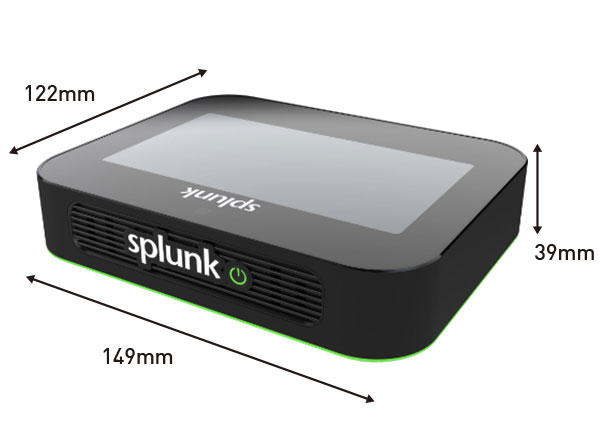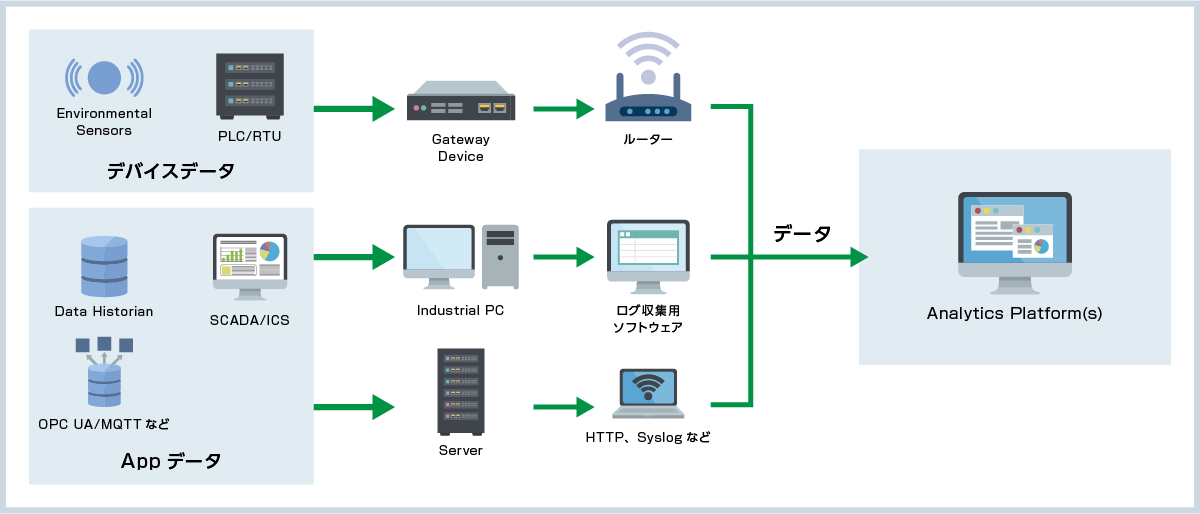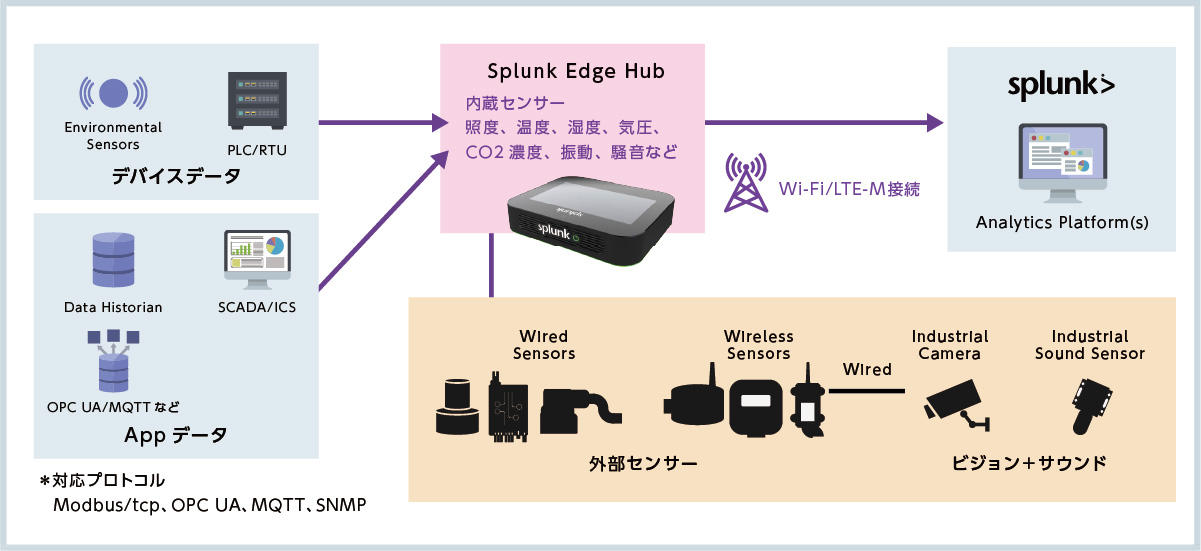product
- Why choose Splunk
- Installation record
- price
- Splunk Enterprise Security
- Splunk Phantom (SOAR)
- Splunk ITSI (Next Generation IT Operations)
- Splunk Observability Cloud
- Splunk UBA
- Macnica CSIRT App Basic
- App for Splunk for Financial Institutions
- Splunk Analytics for Hadoop
- About Apps
- Splunk Edge Hub
- What is Splunk
service
- Dashboard/SPL Creation Pack [Implementation/Building Support]
- Version upgrade service [implementation and construction support]
- Smart Security Monitoring App [Original App/Service]
- Splunk × LANSCOPE Original App [Original App/Service]
- Security Monitoring App for Box [Original App/Service]
- Cloud Security Monitoring App [Original App/Service]
- List of services
Specifications/Technical Information
Application for evaluation machine
- FAQ

Splunk
Splunk
Introducing Splunk Edge Hub
- Sensor + IoT device gateway integrated into one palm-sized device
- Data collection and visualization all done with Splunk
POINT
- Sensor/gateway integrated into one unit
Reduce equipment management costs by providing a one-stop service from data collection from the edge to data transmission to the cloud
- Supports edge AI processing
Equipped with a high-performance NPU made by Arm. AI models are implemented in the chassis, enabling AI processing on the edge
- Seamless integration with Splunk
The Splunk App and mobile devices enable quick data integration with the cloud.

Built-in sensors/compatible protocols
- Equipped with Wi-Fi/LTE and Ethernet ports
- Extensive support for OT protocols

The Challenges of Collecting OT Data
The amount of information from control devices and instruments in factories and plants has been increasing in recent years, but capturing it has not been easy.
In some cases, data is collected through an IoT gateway, and in other cases, logs collected on a maintenance PC are linked with log collection software. Depending on the data source, the communication method may be limited to a specific protocol, so in some cases a mechanism for transferring data from each data source must be prepared. These require consideration individually for each data or sensor to be sent, and the current situation is that there are many different ways to upload the data required for analysis to the analysis platform.

Aggregating and Utilizing Data Flows with Splunk Edge Hub
To consolidate complex data flows in OT environments, Splunk Edge Hub now supports industry-standard protocols widely used in OT. Splunk Edge Hub supports Modbus, MQTT, OPC UA, SNMP and more, allowing external OT data to be uploaded to a Splunk server via Splunk Edge Hub.
In addition, the Splunk Edge Hub itself has internal sensors that collect various environmental information such as temperature, humidity, and air pressure, and simply connecting it to Splunk makes it possible to immediately obtain and send environmental information about the environment in which the Splunk Edge Hub is installed. In other words, it can be used not only as a gateway that aggregates OT data and sends it to Splunk, but also as a device for collecting environmental information at specific bases or locations.
By simply connecting to Splunk Edge Hub, information from sensors and instruments in OT environments can be aggregated in Splunk and immediately visualized.
By working with Splunk, you can take advantage of Splunk's analytics, machine learning and other technologies for safety monitoring, real-time detection, and predictive detection.

Inquiry/Document request
In charge of Macnica Splunk Co., Ltd.
- TEL:045-476-2010
- E-mail:splunk-sales@macnica.co.jp
Weekdays: 9:00-17:00




